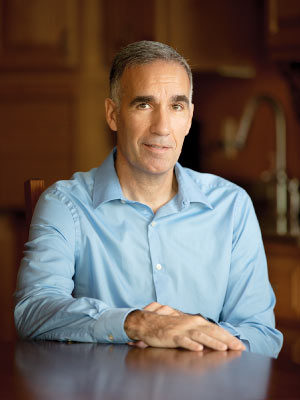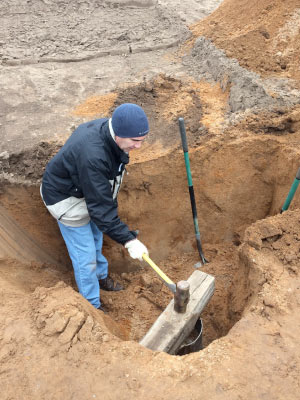
Chris Kucharik is an expert in both atmospheric sciences and land management and ecology. While studying at UW–Madison to earn his PhD in atmospheric and oceanic sciences, Kucharik worked with Professor John Norman on the Boreal Ecosystem-Atmosphere Study (BOREAS), which investigated how carbon, water, and energy were exchanged between forests and the atmosphere and developed remote sensing instrumentation to help observe and model these processes. Later in his post-doctoral research, Kucharik worked with emeritus SAGE director Jon Foley on representing soil biogeochemistry in a numerical ecosystem model, the Integrated Biosphere Simulator (IBIS), that Foley created. “I didn’t do that kind of modeling and didn’t have much knowledge of what it was,” Kucharik admits, “but it sounded fascinating to me.” After initiating carbon cycling field work to support the IBIS modeling, Kucharik continued working with Foley. Eventually, both scientists were in the original group that became the Nelson Institute’s Center for Sustainability and the Global Environment.
Today, Kucharik maintains his appointment with the Nelson Institute. He currently works in the Department of Plant and Agroecosystem Sciences in the College of Agricultural and Life Sciences, where he’s working on two projects that make good use of his interdisciplinary background.
How did you get involved in land management and ecosystem ecology?
When I started my work with Jon Foley, we were modeling vegetation on a global scale, but were only including trees, shrubs and grasses. I wondered why we weren’t including managed agriculture in this model. At this time, dynamic ecosystem models were in their infancy, and crop models didn’t necessarily represent coupled carbon, water, and energy cycling. After discussing ideas with Jon, I created an offshoot of his IBIS model called Agro-IBIS, which I still use today.

How do you benefit from having an interdisciplinary background?
I understand the complete picture of how carbon, water, energy, and nutrients cycle through ecosystems. My weather and climate expertise has served me well in my home department of agronomy because I understand forecast models and how climate changes may impact agriculture down to the nitty-gritty details. Overall, it seems like a very natural and comfortable fit having knowledge about both fields.
Tell me about your weather station project.
My team is creating [a mesonet, or] a dense network of weather stations that provide high temporal resolution weather data and observations. Currently, Wisconsin only has 14 mesonet stations in the state, but the goal is to increase the network to 90 stations over the next four years. We’re aiming to have the stations provide observations about every five minutes, which will be made accessible on a website. The mesonets provide this information for anybody to use, so it would support farmers, crop consultants, K-12 education, and various other groups. Once the expanded stations start collecting more data, we’d like to develop decision-making support tools, particularly for agriculture. These will better help people manage planting, harvesting, fertilization, irrigation, and more.
Are you working on any other projects right now?
Recently, a team that I’m part of was notified that our Research Forward proposal for agrivoltaics was funded, so we can study solar farms and the integration of solar panels on agricultural land. There’s several questions around what kind of an impact large solar arrays might have on ecosystems and the landscape. Do they create heat islands or influence how water is making its way into the soil? Can we have grasses growing and animals grazing on this land? Will crop yields be impacted by having a physical structure interspersed with plant growth? Everybody’s so interested in renewable energy, but at the same time wondering how it will affect our farms and landscapes, making it an attractive topic for a lot of folks to be drawn to.
What’s the coolest part of your job?
Not only the coolest, but also the most rewarding part is mentoring and guiding students. When I step away from academia someday, I’ll miss the excitement and satisfaction of seeing them reach their goals, helping them see different perspectives, and learning from them as they’re doing their own research. I definitely don’t take any of those things for granted.
What’s one piece of advice you give to students?
Career paths can meander quite a bit. You can’t predict what other things might interest you along the way. I went into college thinking I was going to be a meteorologist, and if you had told me 25 years ago that I’d eventually be working in an agronomy department, I would have replied, “what’s agronomy?” I’m pretty thankful that I was interested in ecology, biology, and land management, because it’s given me a pretty rewarding career. You never know where life will take you. I tell a lot of graduate students that what they initially study is just one thing, and it doesn’t cast them in stone forever.